
views
X
Research source
If you think you can make it with the cream of the cream of the crop, read on.
Preparing Yourself

Make sure you meet the requirements. Applications are accepted from men who are 28 years old or less. You may request an age waiver (for those 29 to 30). Age waivers are reviewed on a case-by-case basis. If you are 17, you may enlist with a signature from a parent. If you have previous Navy SEAL experience and would like to become an officer, you are eligible up to age 33. SEALS must have under 20/70 vision, and it must be correctable to 20-25 vision. The worst eye can be 20/70, while the best eye 20/40Become a Navy SEAL Step 1Bullet3.jpg All types of color blindness are disqualifying. In order to be a U.S. Navy SEAL, one must be a native-born or naturalized United States citizen, and must speak, read and write English fluently.Become a Navy SEAL Step 1Bullet4.jpg Upon enlisting in either the Navy or to be a SEAL, you'll need to pass a secret security clearance. In order to do so, it's important to have a blemish-free record. If you were planning on a committing a felony any time soon, change your plans.Become a Navy SEAL Step 1Bullet5.jpg It's important that you are not only physically sound, but mentally and psychologically sound as well. These traits will be assessed during your training.

Get physically fit. There is not an adjective in the English language that can adequately describe the training you'll be going through. Horrendous, immensely draining, designed to push you to your limits, and at times torturous only begin to describe it. Start well before you begin training. The SEAL website has a training guide that you should get started on pronto that's available here. Though it's not necessary, it's a good idea to hone your swimming and SCUBA skills sooner rather than later. Though they will take the time to teach you, it'll be that much easier if you already know how to do it.Become a Navy SEAL Step 2Bullet1.jpg
Enlisting to Be a Navy SEAL
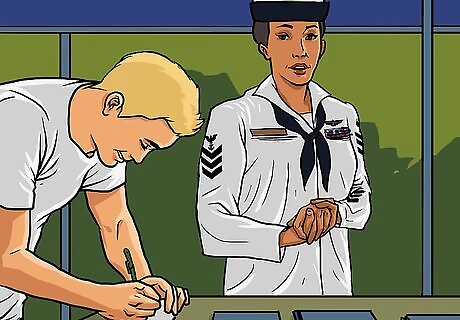
Visit your local Navy recruiter. In order to become a Navy SEAL, you must enlist in the military. Visit your recruiter and tell them of your intentions. They will ask you about all the above requirements and administer a practice ASVAB (the test you'll be taking to determine your mental aptitude). It's important to tell them that you want a SEAL Challenge Contract. If you enlist in the Navy and then decide to become a SEAL, you do not get a $12,000 SEAL sign-on bonus. You'll get a bonus, it just won't be as steep. When visiting the recruiter, take with you your birth certificate, Social Security card, a 10-year history of where you lived and worked, three references with name, phone number, and address, and the names and addresses of people who can verify this information. If all goes well, the Navy recruiter will put you in touch with the regional Naval Special Warfare/Special Operations Mentor or coordinator. They will help you train for your PST (Physical Screening Test). They will also give you your Delayed Entry Program qualifying PST. Specific locations and information are given out on a need-to-know basis, but more information can be found on the SEAL/SWCC website.
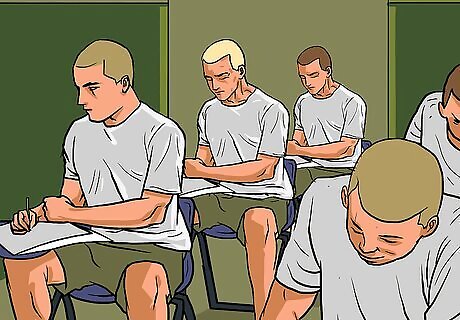
Rock the Armed Services Vocational Aptitude Battery or ASVAB. You will be required to take the ASVAB to join the military. Your scores on these tests determine the Navy jobs or "Rates" for which you are eligible. You must score well enough to qualify for the SEAL program. The ASVAB test is made up of tests in the following subject areas: Word Knowledge Paragraph Comprehension Mathematics Knowledge Arithmetic Reasoning General Science Auto and Shop Information Mechanical Comprehension Electronics Information Numerical Operations Coding Speed (this is optional and should be requested at your Military Entrance Processing Station. If it's not requested, there is only one way to calculate your score; requesting this gives you more flexibility). You'll want an Armed Forces Qualifying Test (AFQT) score (another qualifying test) of 78 or better. Men with this score and higher typically succeed at BUD/S.

Get your Navy contract. Because of the elite-ness of the SEAL qualification, you cannot jump right in and get a SEAL contract. You must first start out with your Navy contract that will be superseded by your SEAL contract in time. On this day, you will take your ASVAB, get a physical (vision, hearing, range of motion, drug testing, medical history), and get a background screening. You will be told whether or not you qualify to become a SEAL. You will then need to sign the contract, taking any other job classification. This contract will have a boot camp date on it. This is for the Navy. Disregard this. After you take your PST (you're "Delayed Entry," remember?) and pass, you'll start your SEAL training instead.

Pass the SEAL Physical Screening Test. To say this test is strict is an understatement. SEAL training is very difficult and there is a high drop out rate during training. Below is the list of physical screening tests. All times are approximate. Event: 500-yard swim using breast and/or sidestrokeBecome a Navy SEAL Step 6Bullet1.jpg Allowable Time: 12:30 Minutes Competitive Time: 9:30 Minutes Rest Period: 10 Minutes Event: Push-upsBecome a Navy SEAL Step 6Bullet2.jpg Allowable Time: 2:00 Minutes Minimum Repetition: 50 Competitive Repetition: 100 Rest Period: 2 Minutes Event: Sit-upsBecome a Navy SEAL Step 6Bullet3.jpg Allowable Time: 2:00 Minutes Minimum Repetition: 50 Competitive Repetition: 100 Rest Period: 2 Minutes Event: Pull-upsBecome a Navy SEAL Step 6Bullet4.jpg Allowable Time: No time limit Minimum Repetition: 10 (dead hang) Competitive Repetition: 19 (dead hang) Rest Period: 10 Minutes Event: 1 ⁄2 mile (2.4 km) Run wearing boots and pants (has been changed to sneakers and shorts) Become a Navy SEAL Step 6Bullet5.jpg Allowable Time: 10:30 Minutes/Seconds Minimum Repetition: N/A Competitive Repetition: 10:20 Minutes/Seconds Rest Period: N/A
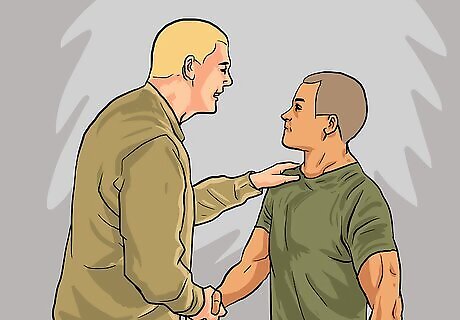
Get your Navy SEAL contract. Now that you've signed your Navy contract and taken the PST, you are now allowed to receive a SEAL contract. Your Special Warfare/Special Operations mentor will help you along this process. If all is fine, you will be reclassified into the SEAL program and a new contract (replacing the old one) must be signed. There is another PST you must take two weeks prior to SEAL boot camp in order to keep your contract. Do not let up on your training. If you do not pass PST 1 or 2 (or any other future PST), you will be taken off the SEAL pipeline and put in another area of the Navy.
Beginning Your Training
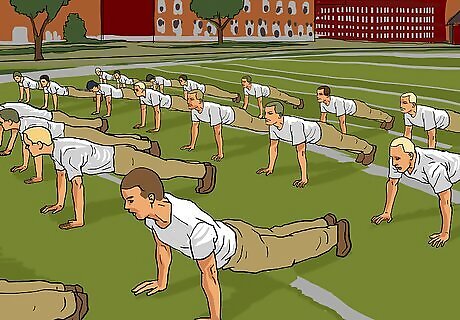
Go to SEAL Prep School in Great Lakes, IL. Here you'll have another initial PST and a closing PST (that's harder than the first one -- a timed four-mile run and a timed 1000-meter swim). It's basically boot camp. Intense boot camp. This lasts for 8 weeks. If you make it through, you'll be shipped off to BUD/S in Coronado, CA. If you don't, you'll be placed in another division of the Navy.
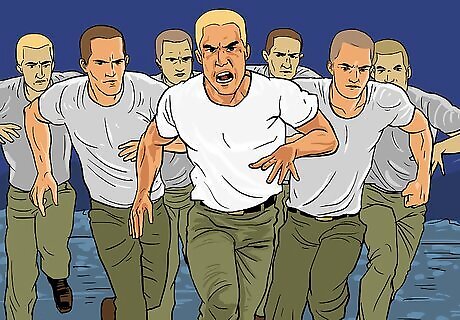
Begin BUD/S. That stands for Basic Underwater Demolition/SEAL. It is a 24-week challenge that will develop you into a mental and physical machine. Each week you will be required to show sufficient improvement. Because of its nature, only 25% make it to the end. BUD/S includes three phases: Phase I is "basic conditioning," focused on mental and physical ability. Phase II covers underwater skills such as combat swimming and SCUBA diving. Phase III, on San Clemente Island, will teach weapons, demolitions and navigation skills and basic, small-unit tactics.
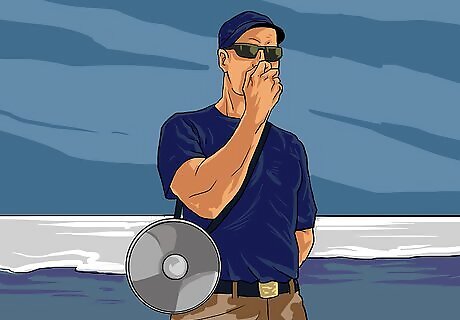
Start orientation. This is the first 3 weeks of BUD/S. It will introduce you to the instructors and the lifestyle to be expected. You will get a sense of the training and be prepared to begin the first real phase. Get ready to hear some not so pretty things. You'll be doing things like drown-proofing -- where you have to swim with either your legs or hands bound -- and surf torture -- where you're exposed to cold water for minutes on end, ordered to do calisthenics, and possibly even run miles in your cold, wet clothes. Then, you'll just be ordered back into the water.

Start the physical conditioning phase. This lasts 7 weeks and is gruesome. It's where the most Drops on Request (DOR) get filed. Those activities mentioned above happen during this stage, along with running 4 miles (6.4 km) in boots, 2 mile (3.2 km) swims in the ocean, participating in timed obstacle courses, and learning small boat seamanship. Fourth week of this Basic Conditioning is affectionately known as "Hell Week." You will be training for 5 1/2 days continuously with 4 hours of sleep total. This is the ultimate test of your physical and mental motivation. You will learn that you can do a hundred times more than what you thought you could ever do and learn how to depend on your team. If you make it through this torturous week, you'll spend three weeks gladly making surveys, charts, and being more academic.
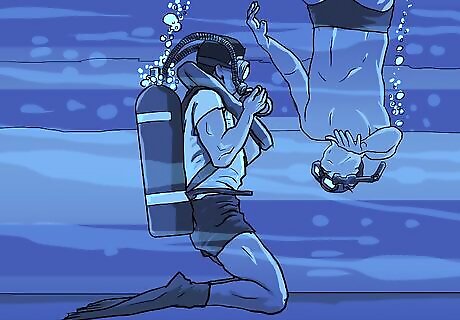
Start the Combat Diving portion of BUD/S. During this time, you will be trained as a combat swimmer. The second phase of this portion concentrates on SCUBA skills -- both open and closed circuits (compressed air and 100% oxygen). You'll also learn some medical skills as well. You'll be doing long-distance underwater dives. Actually, you'll learn how swimming is a mode of transportation. This is unique to SEALs and sets you apart from other Special Operations forces.Become a Navy SEAL Step 12Bullet1.jpg
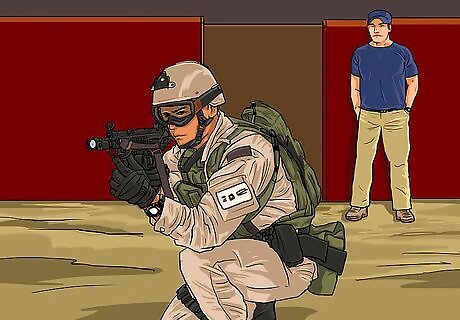
Move onto the Land Warfare phase. For these next 7 weeks, you'll be trained in basic weapons, demolition and small-unit tactics, with the last half on San Clemente Island. But your initial skills aren't forgotten -- in fact, the ante is upped yet again. You'll need to run, swim, and negotiate the obstacle course even faster than before. You'll also be doing some sophisticated land navigation, patrolling techniques, rappelling, marksmanship and military explosives. Thankfully it's not all surf torture and drown-proofing!Become a Navy SEAL Step 13Bullet1.jpg
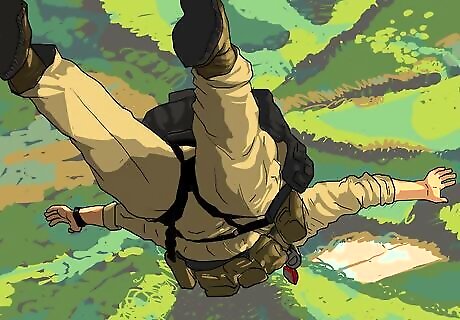
Begin Parachute Jump School. Having made it through BUD/S (hats off to you!), you'll be taken to do static line and free-fall training at Tactical Air Operations in sunny San Diego, CA. The emphasis here is to everything as safely as possible. If you had vertigo or acrophobia up until this point, you might want to consider getting over it. You'll be starting off simple, with basic static line jumps to free falls to accelerated free falls to accelerated free falls with combat equipment to accelerated free falls with combat equipment from 9,500 feet (minimum).
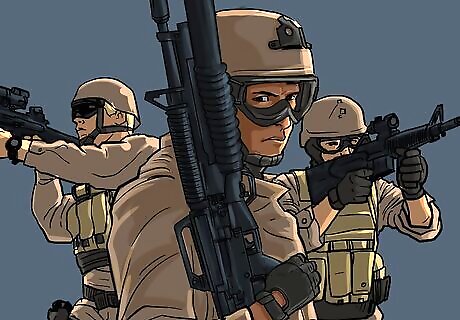
Move on to SEAL Qualification Training (SQT). SQT includes Survival, Evasion, Resistance and Escape (SERE) School and Tactical Air Operations. It's another 26 weeks honing your mental and physical prowess. You'll be taking this time learning TTPs; that's Tactics, Techniques, and Procedures. You'll be put through cold-weather survival, marine operations, advanced combat swimming, close-quarter combat and land-warfare training, rendering you virtually immortal. Perhaps more importantly, you'll be working as part of a platoon and as a valuable member of a team.
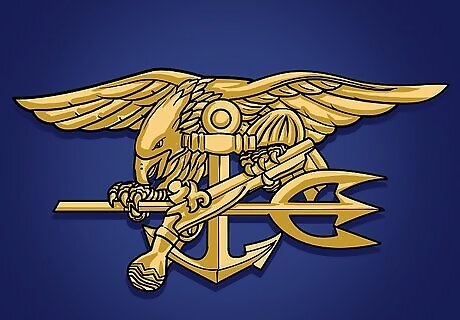
Be awarded the prestigious Navy SEAL Trident. After graduating from SQT, you're a Navy SEAL, worthy of your crown. Congratulations and take a nap. However, the training isn't over. You'll get advanced training and eventually get assigned to a SEAL team.
Getting Advanced Training

Choose your rating. Navy SEALs get specialized -- advanced training could be in foreign language study, SEAL tactical communications training, Sniper, Military Free-Fall Parachuting, Jump Master (Static line and Military Free Fall) and use of Explosive Breachers, to name just a handful. Then there are those that go the medical or officer route. Which speaks to you? A Navy SEAL is a Navy SEAL. Once you have this designation, you've already risen to the top. Now it's time to just home in on what you're naturally good at and thrive on it. Depending on the route you take, you will either go to Virginia Beach, VA, Pearl Harbor, HI, or Coronado, CA.

Report to your first SEAL Team or Special Delivery Vehicle (SDV). Once you do this, you'll begin advanced training that lasts around 18 months. You'll be going through Individual Specialty Training, Unit Level Training and Task Group Level Training. Whatever rating you chose will determine how you progress from here. If you have a medical rating, you will attend the Advanced Medical Training Course 18D first for 6 months to become a SEAL medic. This is in Fort Bragg, NC. If you are choosing to go the Officer route, you will attend the Junior Officer Training Course to learn about operations planning and how to brief and manage teams.
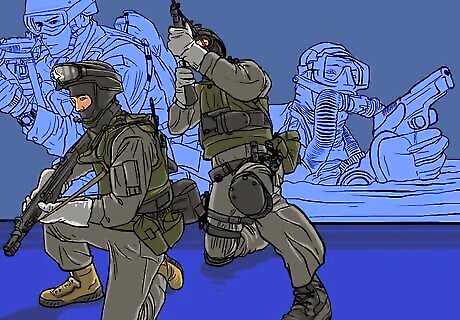
Get deployed. Now that you have skills that could rival any superhero, it's time to put them into action. Most deployments last around 6 to 8 months and could really include anything. You could be traveling by parachute, submarine, helicopter, on foot, or combat swimming. Either way, you'll be maneuvering highly specialized, ridiculously challenging warfare missions that are beyond the scope of standard military forces. Do Navy SEALS have to kill people? The SEAL/SWCC website says quite carefully, "The Navy SEALs train for war and fight to win. The execution of a SEAL's duties is swift and violent when required yet guided by the principles that he serves to defend."
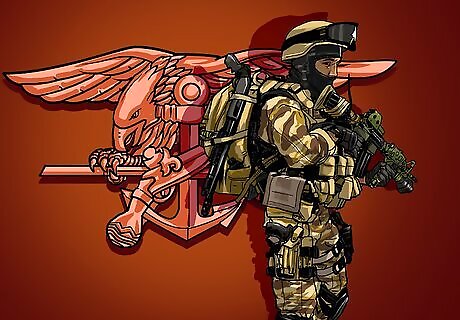
Go even further. Being a Navy SEAL will present you with a number of opportunities, from educational to professional. The Navy offers schooling to make you an expert in virtually anything -- from chemical and biological warfare to military tactics to deep-sea diving. You can even get college credit! After the Navy, you will always be a Navy SEAL. Having that title shows the world that you successfully completed some of the most rigorous training America has to offer. Your future will be full of opportunities.


















Comments
0 comment